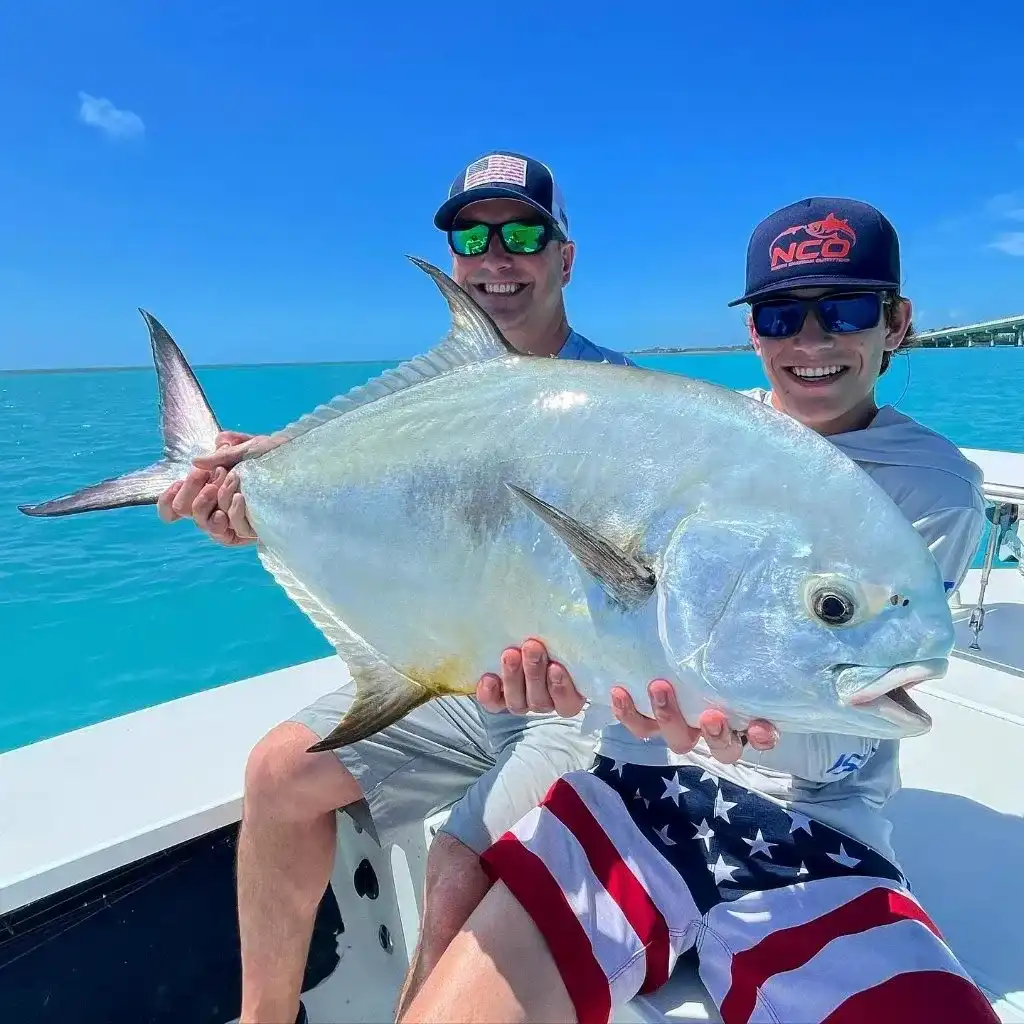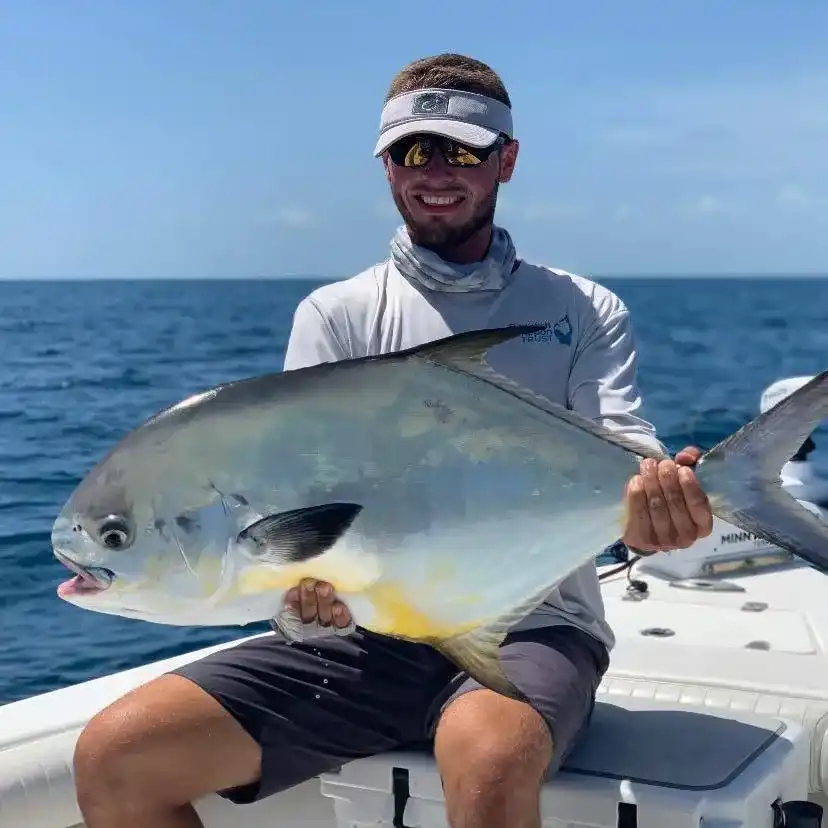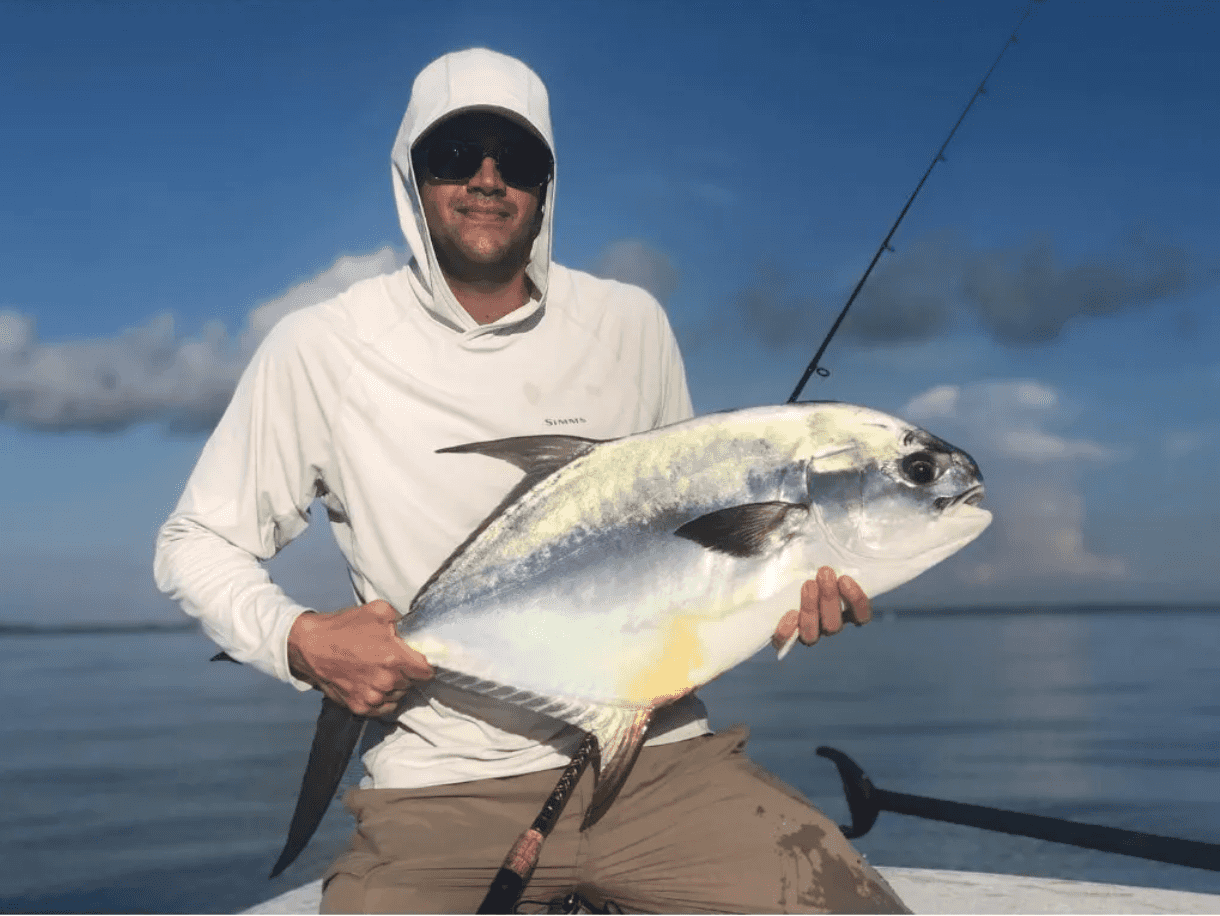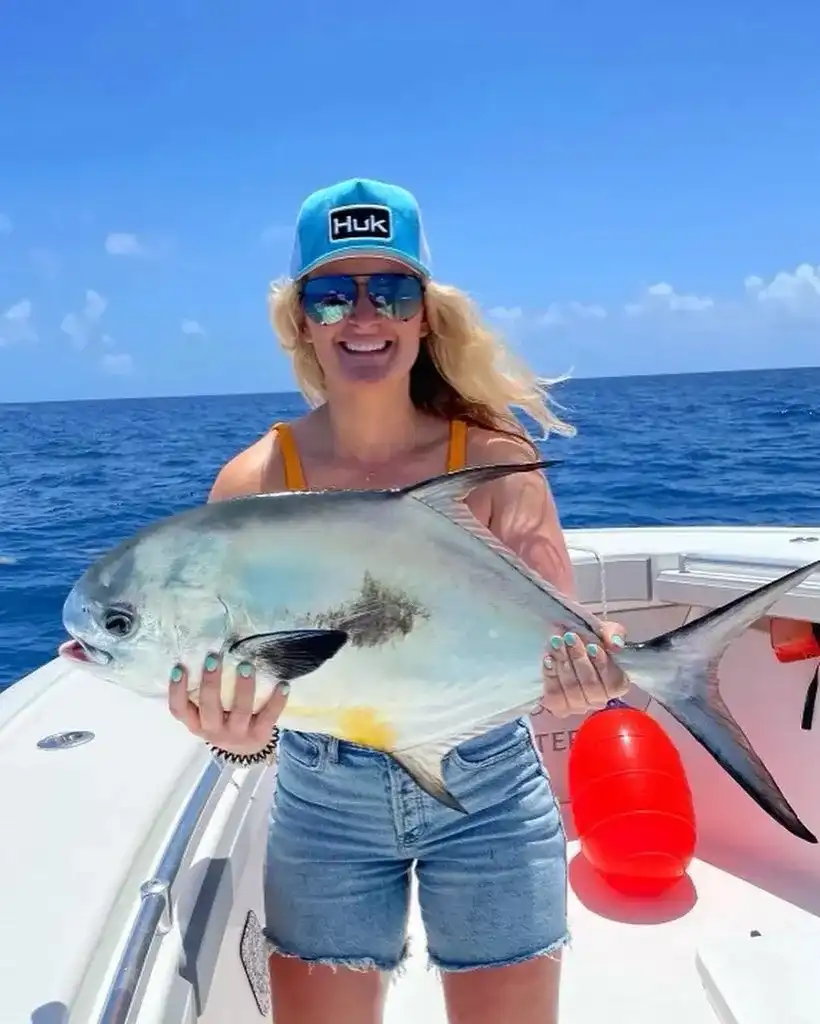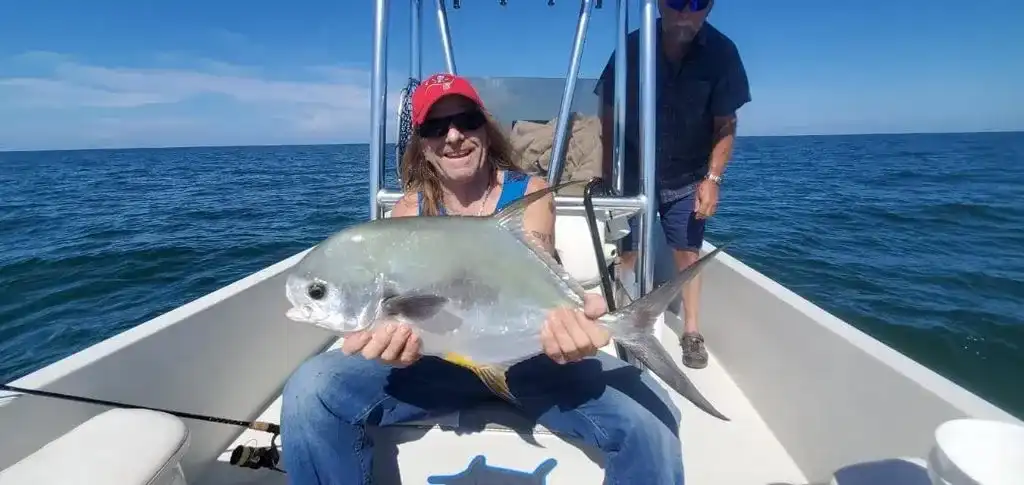Permit
Species Details
Trachinotus Falcatus
Carangidae
Perciformes
Inshore, Flats, Offshore, Reefs, Jetties
9 - 60 lbs.
24" - 48"
Are Permit fish hard to catch?
Permit are amongst the trickiest fish to land, be it freshwater or seawater. They possess extraordinary eyesight, keen hearing, and a sharp olfactory system that rivals that of the bloodhound's. However, the difficulty is heightened due to their temperamental and fickle nature, often refusing to take the bait.
Permit (Trachinotus Falcatus) Description
The Permit fish is a tall, flat fish with elongated dorsal and anal fins and a deeply forked tail. They have silvery coloration on their scales and dark markings on their dorsal fins giving its nickname, Rough Back. The smaller, younger Permit may be difficult to decipher from the Pompano; however, one way to tell is a color check. Permit have orange colorings on their chins, fins, or bellies as opposed to the Pompano that has yellow coloring in those areas.
Size
The common permit is 36 inches but can reach lengths of 48 inches and can weigh up to 60 pounds. The world fishing record for Permit is 60 pounds 8 ounces.
Interesting Facts
Juvenile Permit school together inshore where they hunt their prey on sandy seagrass flats. As they grow older, they become more solitary fish.
Permit grow rapidly during the first five years of their lives and they continue to live to about 23 years of age. They are known to suffer from a number of parasites and bacteria that can infest the skin and gills, leading to the fish's death.
They have golfball size eyes that can rotate almost 360 degrees which gives them outstanding eyesight and an advantage over the angler.
Permit like shallow water considering their tall stature. They are sometimes found in only 2 feet of water which barely seems deep enough for them. Even so, the fly fisherman will find this a challenging fish to catch.
Spawning
Permit typically spawn in spring and summer, but in the warmer climates, they can spawn year-round. They are multiple batch spawners, meaning one fish can produce eggs more than once a season. Reproduction typically takes place offshore in deep waters.
Habitat
You will find the juvenile Permit inshore in shallow mud, grass and sand flats and channels. You may even find them in some brackish areas. Adult Permit can be found by offshore wrecks, oil platforms, jetties, and artificial reefs.
Fishing Techniques - How to Catch Permit
The permit is an elusive fish to catch. Blue crabs are the standard bait used for permit fishing, with almost all angling done with live bait. Recommended tackle would consist of medium weight rods, a baitcasting reel, a 20-pound braid line with a monofilament or fluorocarbon leader of 30 pounds, and 2/0 to 4/0 circle hooks. Vertical jigging below the boat is a popular technique to take in deeper water due to the tendency of fishing around reefs and structures. Vertical jigging in these situations helps fishermen avoid snagging their line on a structure.
For the fly fisherman fishing in shallow waters, a 12 weight rod should do just fine. Crab imitation lures are about the only artificial lures you need. Soft plastics such as the Berkley Gulp saltwater peeler crab and D.O.A. soft shell crab lures are great imitations to live bait; rig them on a circle hook for the best hookups. Flies such as the crabby patty and the McCrab work well.
Distribution and Range
Permit can be found as far north as Massachusetts and as far south as Brazil. Areas like Florida and the Caribbean Islands have an abundance of Permit. In the United States, the flats in South Florida are famous for Permit fishing. Here, the Permit are more challenging to catch than Bonefish and Tarpon. The prime season coincides with the spawning season, from April to October, but Permit is reeled in year-round in temperate waters.
